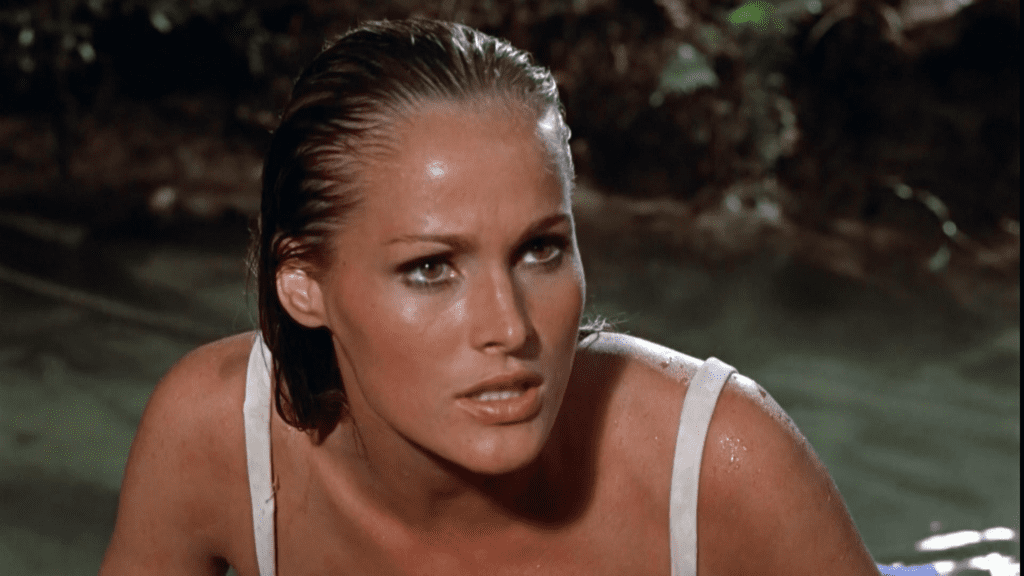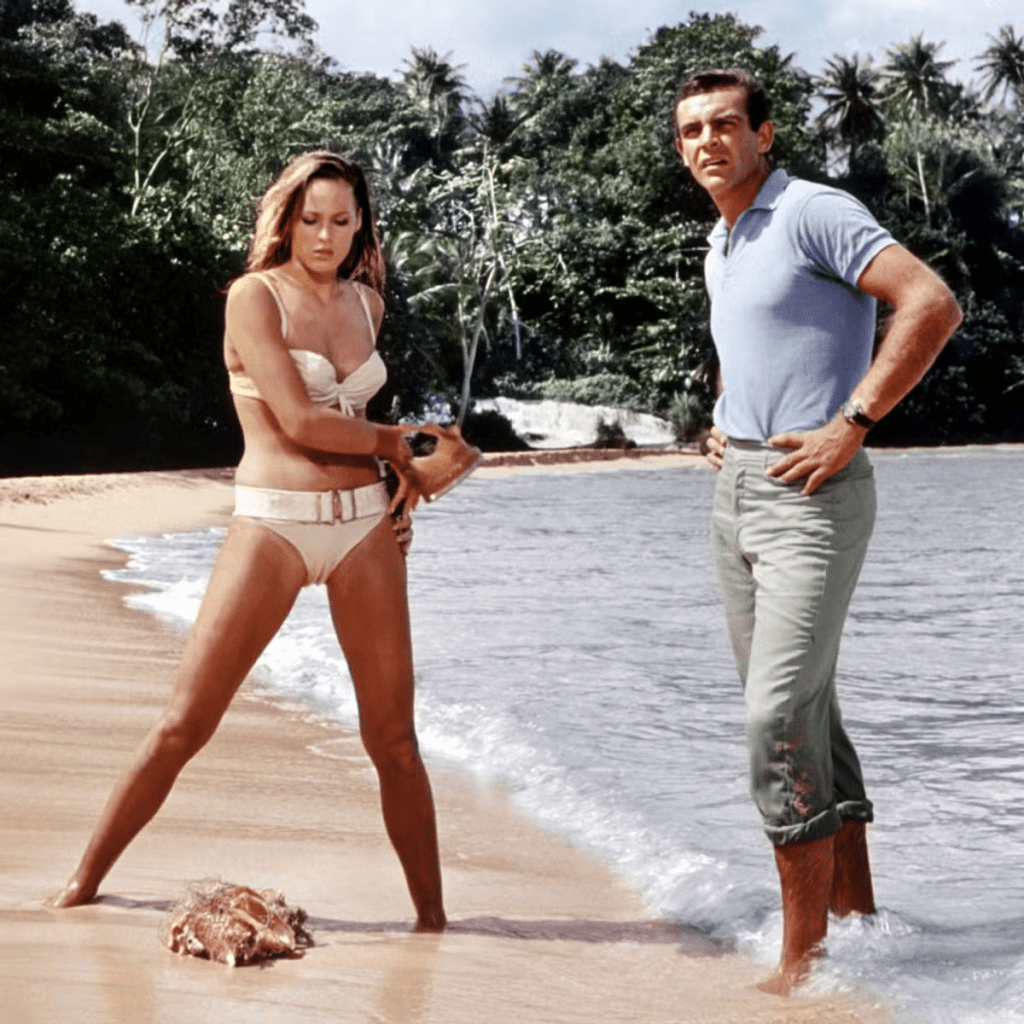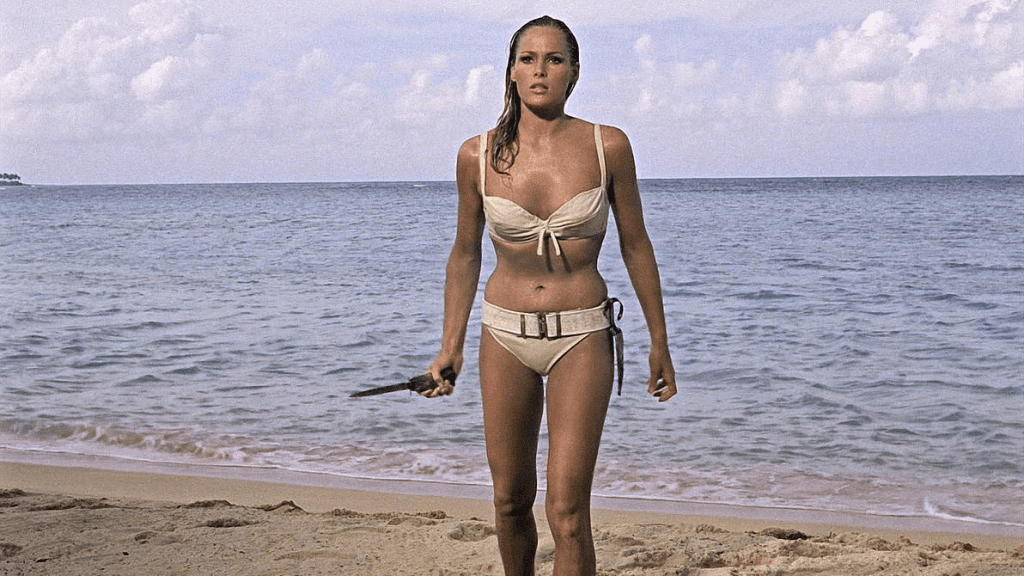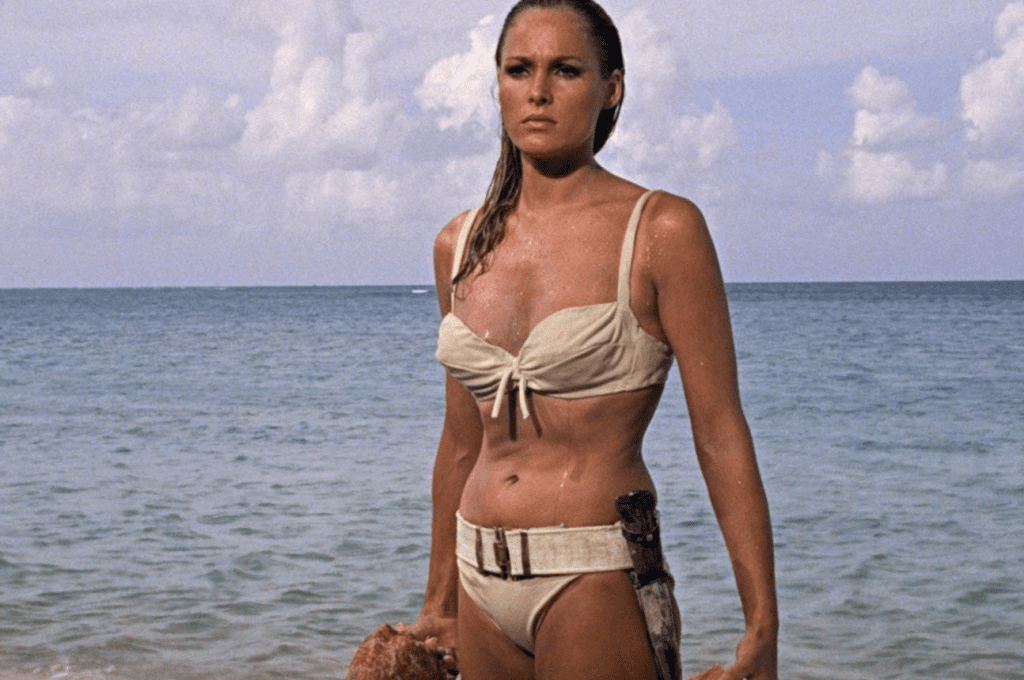
In the early 1960s, producers Albert R. Broccoli and Harry Saltzman were casting for Dr. No, the first James Bond film. They needed a woman who could match the charisma of Bond, stand on her own, and captivate global audiences.
They found her in Ursula Andress, a Swiss actress whose previous roles had offered only a glimpse of her potential. With her casting as Honey Ryder, they gave birth to one of the most memorable characters in modern cinema.
Video: DR. NO | Bond meets Honey
The moment Honey Ryder steps out of the sea with her white bikini, seashell basket, and commanding gaze, a new era in film began. The scene, often referenced and endlessly parodied, became a cultural landmark not just because of visual appeal—but because it introduced a character who challenged expectations.
She wasn’t a damsel in distress. She carried a knife, gathered marine shells for a living, and held her own in a world of danger. Andress brought both strength and allure to a role that could have easily been one-dimensional.

Ursula Andress’s life changed overnight after Dr. No. Offers poured in from around the world. She became a staple of international cinema throughout the 1960s and 1970s, known not only for her looks but for her on-screen magnetism.
She took on adventurous and diverse roles in films such as:
- The 10th Victim (1965), a stylish science fiction thriller
- Slave of the Cannibal God (1978), where she portrayed a fearless explorer
- Red Sun (1971), alongside Charles Bronson and Toshiro Mifune

Her work extended to both European and American productions, showing a global appeal few actresses achieved during the era.
Andress’s role in Dr. No symbolized a broader shift in how women were portrayed in media. Honey Ryder had agency, a backstory, and emotional complexity—even if the film only hinted at deeper layers.
She broke the mold of the silent companion and became a prototype for action heroines. Over time, actresses like Sigourney Weaver, Linda Hamilton, and Angelina Jolie would portray strong women in genre films—but it began with Ursula.

The swimsuit worn by Andress in Dr. No was her own design, and it became a powerful cultural artifact. Decades later, it remains a shorthand for confidence, independence, and timeless beauty. It influenced fashion, pop culture, and even advertising.
Numerous films have paid homage to that scene, from Die Another Day (2002) to The Spy Who Shagged Me (1999). The original bikini now sits in a museum, recognized for its impact not just on film, but on cultural perceptions of femininity and strength.
Video: Dr. No (8/8) Movie CLIP – Love at Sea (1962)
After her peak acting years, Ursula Andress gradually retreated from Hollywood’s limelight. She focused on family, art, and select appearances. She became known for her introspective interviews and candid reflections on fame, beauty, and aging.
Despite not actively pursuing fame in later decades, her contributions to cinema remained recognized by fans and scholars alike. She appeared in retrospectives and documentaries that explored her pivotal role in launching the Bond series and shaping modern female leads.

Honey Ryder is still considered the archetype of the Bond woman—not just beautiful, but resourceful and bold. Ursula Andress gave the role depth that extended far beyond surface-level appeal.

Her legacy endures not only in the film reels of the 1960s but in the DNA of every modern action heroine that followed. Ursula’s performance in Dr. No wasn’t just memorable—it was revolutionary.


